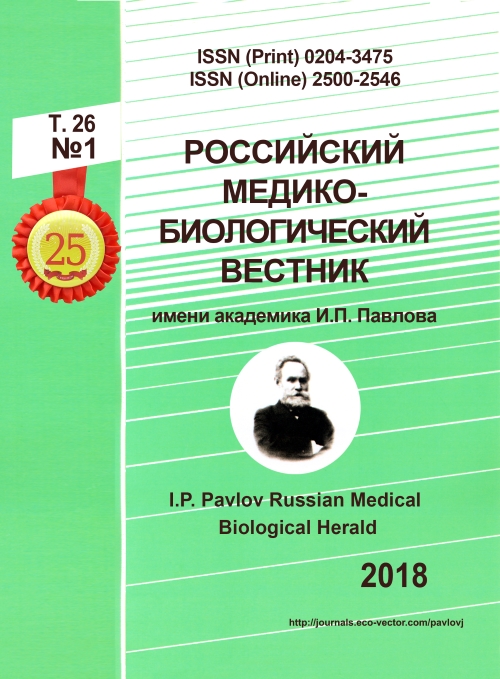Principles of drug therapy for acute bacterial rhinosinusitis: from evidence-based medicine to practice
- Authors: Pshennikov D.S.1, Angotoeva I.B.2
-
Affiliations:
- Ryazan State Medical University
- Russian Academy of Postgraduate Education
- Issue: Vol 26, No 1 (2018)
- Pages: 106-116
- Section: Reviews
- URL: https://bakhtiniada.ru/pavlovj/article/view/8755
- DOI: https://doi.org/10.23888/PAVLOVJ2018261106-116
- ID: 8755
Cite item
Abstract
The problem of treatment of acute rhinosinusitis (ARS) is extremely important due to high prevalence of the disease. According to statistical data the ARS affects from 6% to 15% of population and does not show any tendency to reduction. These figures are associated with a high rate of acute respiratory viral infection (ARVI) which directly leads to rhinosinusitis. But, however, despite the fact that practically every individual experiences from 2 to 5 episodes of ARVI every year, only 0.5-2% of them are complicated with acute bacterial rhinosinusitis (ABRS). Despite this low percentage of bacterial infection, in 80% of cases systemic antibacterial treatment is prescribed which further worsens the problem of bacterial resistance in the world. The main difficulty in determination of therapeutic approach to ABRS is associated with absence of reliable methods of differential diagnostics of viral and bacterial etiology of the disease. Because of low sensitivity and specificity, none of additional visualization methods of ABRS diagnosing such as radiography, ultrasonography, computed tomography, can be used as a routine laboratory method. Thus, the main method of differential diagnostics of viral and bacterial ARS remains analysis of clinical data which leads to a high rate of diagnostic errors and to polypragmacy.
Nowadays there exists a wide range of medications for treatment of ABRS in the pharmacological market. The choice of therapeutic approach by our international colleagues is mostly based on the requirements of evidence-based medicine. Russian scientists, besides evidence-based medicine principles take into account the pathogenesis of the disease.
In this article different groups of medications for treatment of ABRS are presented. Some of them do not meet the requirements of evidence-based medicine so far, but they are included to the Russian standards and are used for management of ABRS.
Full Text
##article.viewOnOriginalSite##About the authors
D. S. Pshennikov
Ryazan State Medical University
Author for correspondence.
Email: pshennikovd@mail.ru
ORCID iD: 0000-0002-1779-8341
SPIN-code: 7294-5879
Assistant of the Department of Ocular and ENT-Diseases of Continuing Professional Education Faculty
Russian Federation, 9, Vysokovoltnaja, Ryazan, 390026I. B. Angotoeva
Russian Academy of Postgraduate Education
Email: pshennikovd@mail.ru
ORCID iD: 0000-0002-6247-619X
SPIN-code: 7660-5674
MD, PhD, Associate Professor of of the Department of Otorhinolaryngology
Russian Federation, 2/1, Barrikadnaja str., Moscow, 123995References
- Zabolevaemost' naseleniya Rossii v 2007 g.: statisticheskie dannye. Part I. Moscow: Minzdravsotsrazvitiya Rossii; 2008. (In Russ).
- Fokkens WJ, Lund VJ, Mullol J, et al. EPOS 2012: European position paper on rhinosinusiyis and nasal polyps 2012. A sum-mary for otorhinolaryngologists. Rhinology. 2012; 50(1):1-12. doi: 10.4193/Rhino50E2.
- Lopatin AS, Gamov VP. Ostryi i khronicheskii rinosinusit: etiologiya, patoge-nez, klinika, diagnostika i printsipy lecheniya: uchebnoe posobie. Moscow: Meditsinskoe informatsionnoe agenstvo; 2011. (In Russ).
- Anon JB, Jacobs MR, Poole MD, et al. Antimicrobial treatment guidelines for acute bacterial rhinosinusitis. Otolaryngol Head Neck Surg. 2004; 130(6):794-6. doi: 10.1016/j.otohns.2003.12.003.
- Chow AW, Benninger MS, Brook I, et al. IDSA clinical practice guideline for acute bacterial rhinosinusitis in children and adults. Clin Infect Dis. 2012;54(8):72-112.
- Svistushkin VM, Savvateeva DM. Current trends in the treatment of acute rhinosinusitis. Russkij medicinskij zhurnal. 2016; 4:251-4. (In Russ).
- Turovskiy AB, Karyuk YuA, Kondrashina VV. Antibakterial'naya terapiya infektsiy LOR-organov. Klinitsist. 2013; 3(4):98-103. (In Russ).
- Jakovlev SV, Sidorenko SV, Rafal'skij VV, et al, editors. Strategija i tak-tika racional'nogo primenenija antimikrobnyh sredstv v ambulatornoj praktike: Evrazijskie klinicheskie rekomendacii. Moscow: Pre100 Print; 2016. (In Russ).
- Abdulkerimov KhT, Garashchenko TI, Koshel' VI, et al.; Ryazantsev SV, editor. Printsipy etiopatogeneticheskoi terapii ostrykh sinusitov: metodicheskie rekomendatsii. Saint-Petersburg: Poliforum Grupp; 2014. (In Russ).
- Hansen J.G., Schmidt H., Grinsted P. Randomized, double blind, placebo controlled trial of penicillin V in the treatment of acute maxillary sinusitis in adults in general practice. Scand J Prim Health Care. 2000; 18(1):44-7.
- Hickner JM, Bartlett JG, Besser RE, et al. Principles of appropriate antibiotic use for acute rhinosinusitis in adults: background. Ann Intern Med. 2001; 134(6):498-505.
- Lund VJ. Therapeutic Targets in Rhinosinusitis: Infection or Inflammation? Medscape J Med. 2008; 10(4):105.
- Van Buchem FL, Knottnerus JA, Schrijnemaekers VJ, et al. Primary-care-based randomised placebo-controlled trial of antibiotic treatment in acute maxillary sinusitis. Lancet. 1997;349:683-7.
- Meltzer EO, Bachert C, Staudinger H. Treating acute rhinosinusitis: comparing efficacy and safety of mometasone furoate nasal spray, amoxicillin, and placebo. J Allergy Clin Immunol. 2005; 116:1289-95.
- Lin AN, Paget SA. Principles of Corticosteroid Therapy. Arnold; 2002.
- Hochhaus G. Pharmacokinetic / pharmacodynamic profile of mometasone furoate nasal spray: potential effects on clinical safety and efficacy. Clin Ther. 2008; 30:1-13.
- Allen DB. Systemic effects of intranasal corticosteroids: an endocrinologist's perspective. J Allergy Clin Immunol. 2000; 106(4):179-90.
- Williamson IG, Rumsby K, Benge S, et al. Antibiotics and topical nasal steroid for treatment of acute maxillary sinusitis. JAMA. 2007; 298:2487-96.
- Mygind N, Nielsen LP, Hoffmann HJ, et al. Mode of action of intranasal corticosteroids. J Allergy Clin Immunol. 2001; 108(Suppl 1):S16-S25.
- Novikova L, Baranova O, Ilkovich Yu. Use of acetylcysteine in clinical pulmonology. Vrach. 2014; 2:13-6. (In Russ).
- Zheng СН, Ahmed К, Rikicomi N, et al. The effects of S-carboxymethylcysteine and N-acetylcysteine on the adherence of Moraxella catarrhalis to human pharyngeal epithelial cells. Microbiol. Immunol. 1999; 43(2): 107-13.
- Karpova EP, Tulupov DA. On The Possibilities of Nebuliser Therapy In The Treatment of Acute Rhinosinusitis In Children. Rossiiskaya otorinolaringologiya. 2013; 4(65):160-3. (In Russ).
- Lopatin AS, editor. Ostryj rinosinu-sit: klinicheskie rekomendacii. Moscow: Rossi-jskoe obshhestvo rinologov; 2017. (In Russ).
- Pshennikov DS, Angotoeva IB. The prospects for inhalation therapy of rhino-sinusitis. Nauka molodykh (Eruditio Juve-nium). 2017; 2:277-82. doi: 10.23888/HMJ 20172277-282.
- Mezhevikina GS, Morozova SI, Savelyeva NA, et al. Modern technologies of treatment of candidiasis of oral mucosa. Rossijskiy mediko-biologicheskiy vestnik imeni akademika I.P. Pavlova. 2012;20 (4):158-163. doi: 10.17816/PAVLOVJ20124-158-163.
Supplementary files







